California wild grape is known best for its sensational fall colors, but it is much more than a one-season plant. In spring its silvery leaves and tiny buds emerge from bare vines. In summer the lush foliage with ripening fruit will conceal that undesirable chain-link fence. And in winter it reveals its most interesting feature — its gnarled and peeling vine branches. California wild grape is truly a four-season plant.
As with many vines, this one can grow fast and furiously. Pruning in winter keeps it manageable and lovely. Use it to quickly cover a fence, an arbor or a wall; it can even be used as a ground cover. It works in many situations — wet or dry soil, sun or partial shade, clay or sand — and makes a charming statement throughout the year.
Caution: The fruit of California wild grape is toxic to dogs.
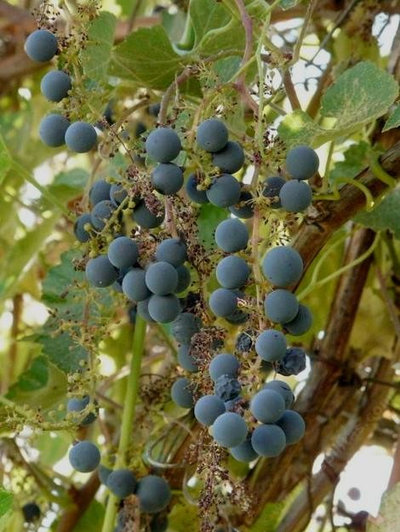
Las Pilitas Nursery
Botanical name: Vitis californicaCommon name: California wild grape
Origin: Riparian woodlands, streamsides, springs and canyons below 4,000 feet; Western foothills and the east side of the Sierra Nevada, Central Valley and Coast Ranges to southern Oregon
Where it will grow: Hardy to 25 degrees Fahrenheit (USDA zones 7 to 10; find your zone)
Water requirement: Infrequent to moderate; drought tolerant once established
Light requirement: Full sun to partial shade
Soil requirement: Adaptable to different soils
Mature size: 40 feet long
Benefits and tolerances: Clay tolerant
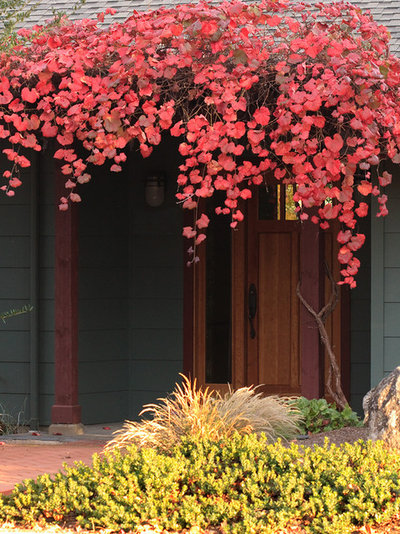
John J. Kehoe Photography
Seasonal Interest- Spring: New leaves and buds; tender, silver-green leaves and tiny bundles of buds emerge from the twisted vine branches.
- Summer: Lush leaves and fruit; full, lush leaves shade the green grapes until they ripen in late summer to deep purple, intensely flavored — if small — table grapes.
- Autumn: Colorful foliage; the leaves change to bright reds, oranges and yellows; the grapes will continue to ripen, then start to dry, like raisins
- Winter: Bare vines; the peeling bark on twisted and gnarled vines is both elegant and rugged.
When to plant: Fall to spring is ideal
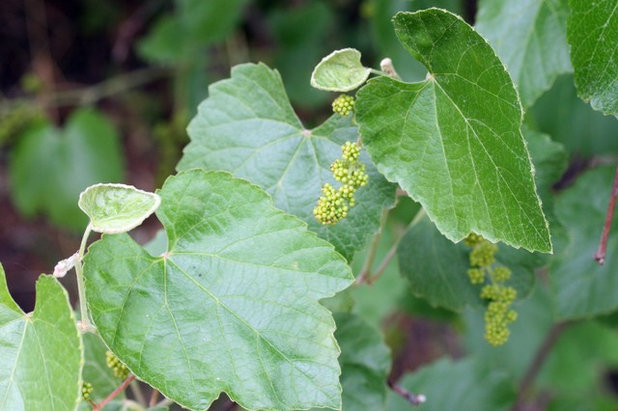
David A. Hofmann
Wildlife value. California wild grape provides dense cover for wildlife; nectar for pollinators, including California’s Hummingbird Moth; and naturally dried “raisin” fruit for birds. Of course, people enjoy eating the fruit too! Some make jellies and jams.
Distinguishing traits. This is a fast-growing deciduous vine that provides stunning fall color, intensely flavored grapes in summer and interest from gnarled bare vines in winter.
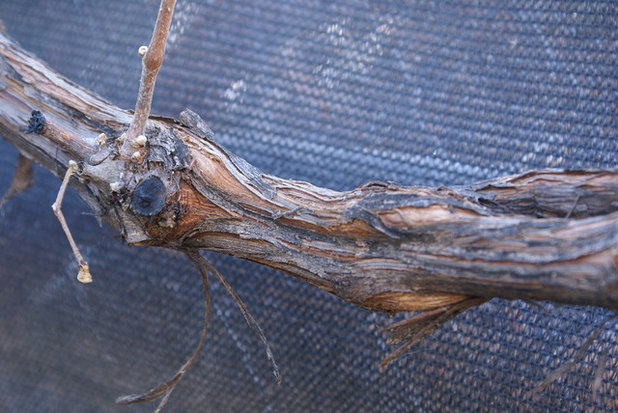
Debbie Ballentine
Woody and peeling vine branches that are both elegant and rugged are revealed in winter.

Pete Veilleux, East Bay Wilds
How to use it. Great for arbors, walls and fences. Many use it to cover an unsightly garden structure, such as a chain-link fence. Plant it where its bright fall colors can be enjoyed by all.
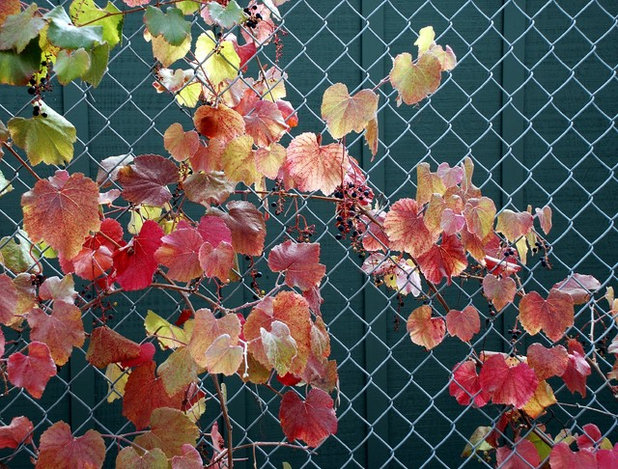
Pete Veilleux, East Bay Wilds
Other species, cultivars and hybrids:
- Vitis californica ‘Roger’s Red’ (shown): This robust selection was originally thought by horticulturist Roger Raiche to be fully native. Later DNA testing revealed that it is a naturally occurring hybrid with the agricultural grape V. vinifera. ‘Roger’s Red’ is a particularly vigorous vine that can easily reach 40 feet in length. It is readily available in nurseries and adored for its shocking scarlet leaves in fall.
- ‘Russian River’: A cultivar with plum-red autumn leaves that persist into winter
- ‘Walker Ridge’: A smaller cultivar that grows to 15 feet; gray-green leaves in summer; bright yellow and orange-red leaves in fall
- Vitis girdiana: A heat-tolerant species from southern California
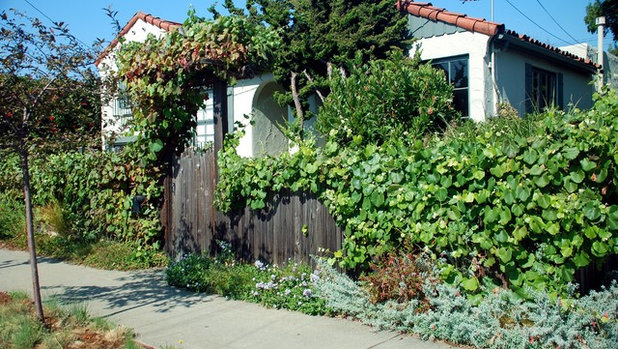
Pete Veilleux, East Bay Wilds
Planting notes. Not a fussy plant, California wild grape is adaptable to different soils and sun exposure and, once established, is also adaptable to lower water. Give it plenty of space on a wall, fence or arbor next to its planting site.
Tendrils reach, grasp and hold as the vine grows. The vines are easy to direct. During the growing season, move branches where you want them, tying them to the structure if needed. Then just let the tendrils do their work.





